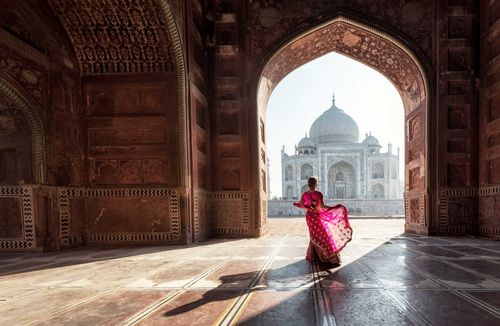Best things to do in Nagpur
From the fine views at Ramtek to the sacred site of Ambala Lake, here are the best things to do in Nagpur.
#1 Visit the whitewashed hilltop temples at Ramtek
The picturesque cluster of whitewashed hilltop temples and shrines at Ramtek, 40 km northeast of Nagpur on the main Jabalpur road (NH-7), is one of those alluring apparitions you spy from afar on long journeys through central India.
According to the Ramayana, this craggy, scrub-strewn outcrop was the spot where Rama, Sita and Lakshmana paused on their way back from Lanka. Although few traces of these ancient times have survived, the site’s old paved pilgrim trails, sacred lake, tumbledown shrines and fine views across the endless plains more than live up to its distant promise.
#2 Head to Ram Mandir to see the memorial for the great Sanskrit poet, Kalidasa
On the fringes of the town a flight of stone steps climbs steeply up the side of Ramtek hill to the Ram Mandir. Built in 1740, the temple stands on the site of a fifth-century structure, of which only three small sandstone shrines remain.
Just beneath the temple complex stands the circular Kalidas Smarak, a modern memorial to the great Sanskrit poet, Kalidasa. The pavilion’s interior walls are decorated with painted panels depicting scenes from his life and works.
#3 Bathe in the sacred waters of Ambala Lake
Another of Ramtek’s sacred sites is Ambala Lake, a holy bathing tank that lies 1.5km along a pilgrims’ trail at the bottom of the gully, enfolded by a spur of parched brown hills. Its main attractions are the temples and ghats clinging to its muddy banks.
More energetic visitors can combine a look with a parikrama, or circular tour of the tank. This takes in the semi-derelict cenotaphs and weed-choked shrines scattered along the more tranquil north and western shore.
#4 Gawp at the huge Deekshabhoomi monument
It's the bulbous 120-sq-ft stupa that first catches the eye when you come across the remarkable Deekshabhoomi monument, the largest in the world.
Something of a major pilgrimage site, though often little known outside of India, this iconic 5,000-people capacity was the work of B. R. Ambedkar, a Hindu-turned-Buddist whose aim in life was to do away with the caste system. Built in 1956, the intricate carvings and meticulous attention to detail showcase the craftsmanship of the artisans involved. A visit here is often a deeply enriching experience and it offers travellers the chance to learn about Ambedkar's teachings and philosophy.


_listing_1448379939234.jpeg)






















